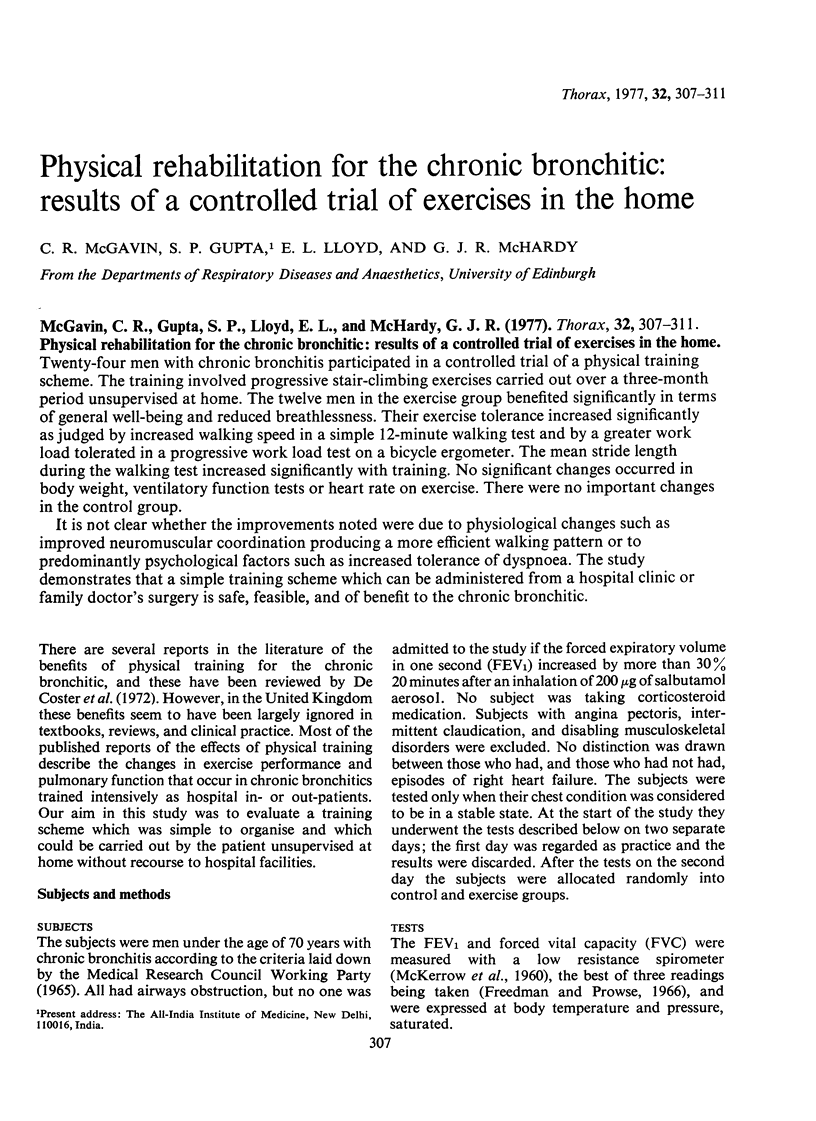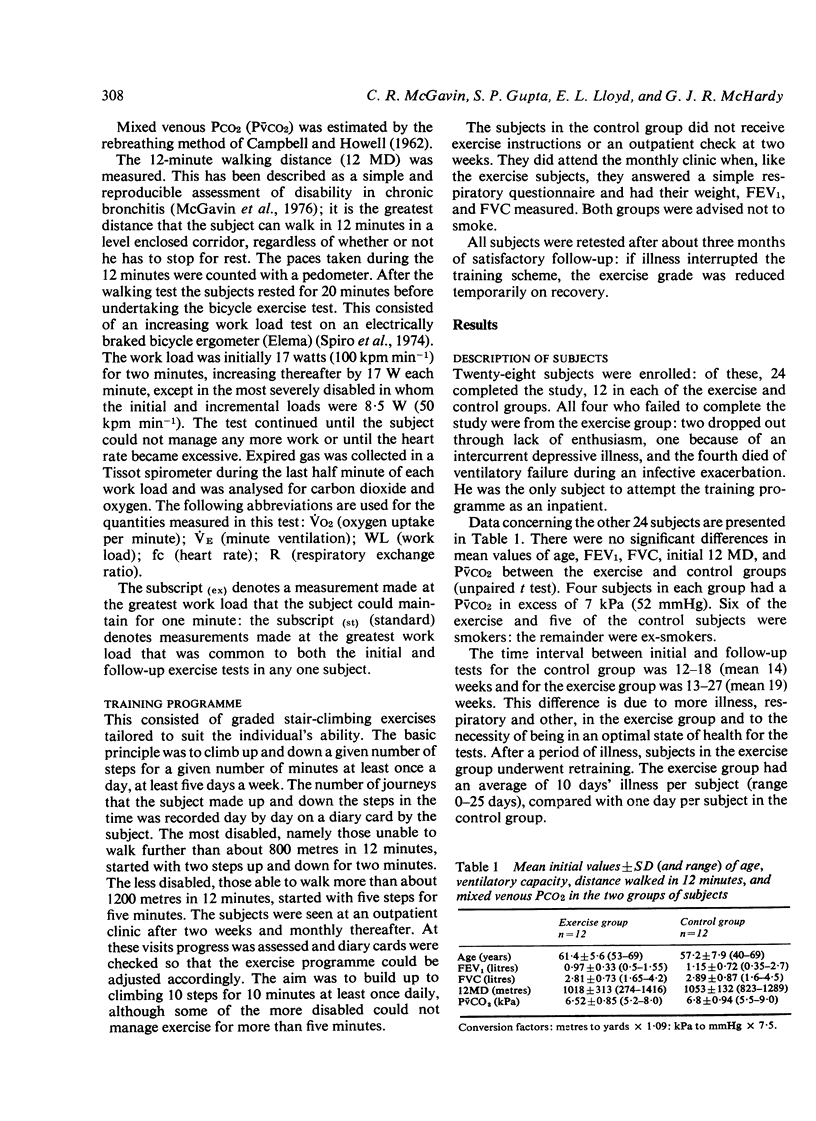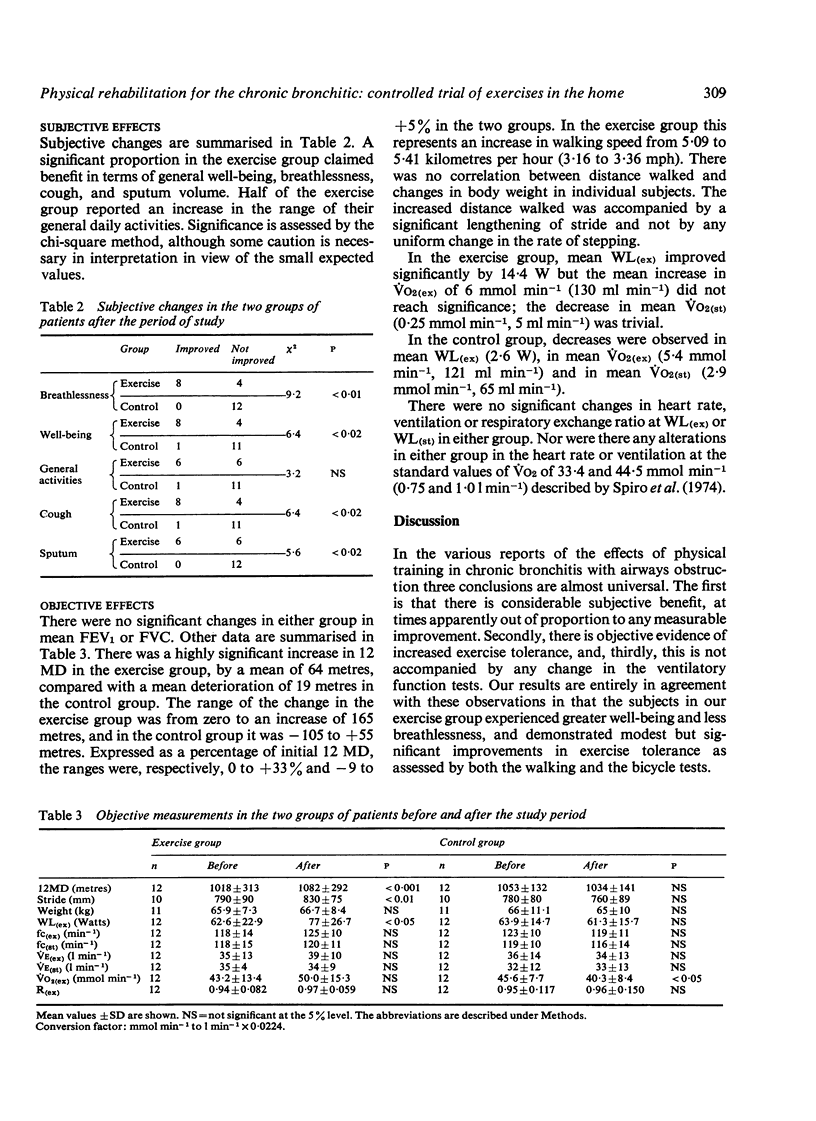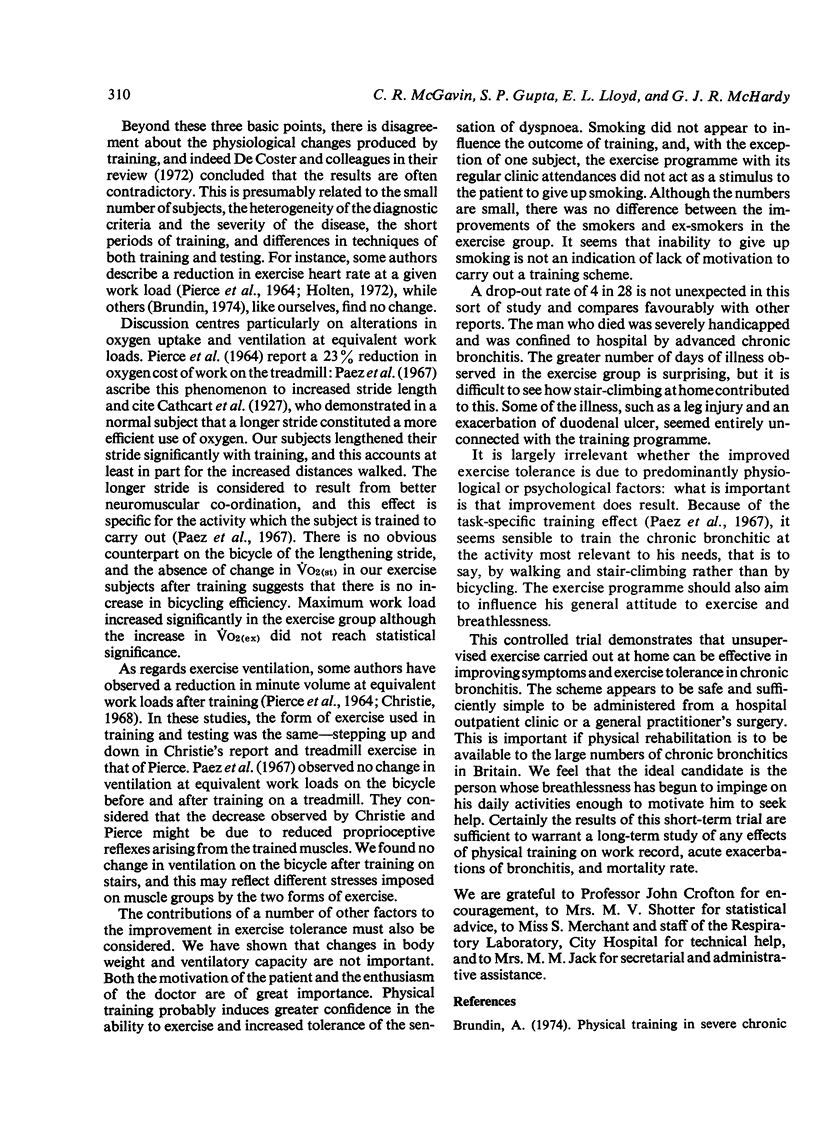Abstract
Twenty-four men with chronic bronchitis participated in a controlled trial of a physical training scheme. The training involved progressive stair-climbing exercises carried out over a three-month period unsupervised at home. The twelve men in the exercise group benefited significantly in terms of general well-being and reduced breathlessness. Their exercise tolerance increased significantly as judged by increased walking speed in a simple 12-minute walking test and by a greater work load tolerated in a progressive work load test on a bicycle ergometer. The mean stride length during the walking test increased significantly with training. No significant changes occurred in body weight, ventilatory function tests or heart rate on exercise. There were no important changes in the control group. It is not clear whether the improvements noted were due to physiological changes such as improved neuromuscular coordination producing a more efficient walking pattern or to predominantly psychological factors such as increased tolerance of dyspnoea. The study demonstrates that a simple training scheme which can be administered from a hospital clinic or family doctor's surgery is safe, feasible, and of benefit to the chronic bronchitic.
Full text
PDF




Selected References
These references are in PubMed. This may not be the complete list of references from this article.
- CAMPBELL E. J., HOWELL J. B. Rebreathing method for measurement of mixed venous PCO2. Br Med J. 1962 Sep 8;2(5305):630–633. doi: 10.1136/bmj.2.5305.630. [DOI] [PMC free article] [PubMed] [Google Scholar]
- Christie D. Physical training in chronic obstructive lung disease. Br Med J. 1968 Apr 20;2(5598):150–151. doi: 10.1136/bmj.2.5598.150. [DOI] [PMC free article] [PubMed] [Google Scholar]
- De Coster A., Sergysels R., Degre S. La réadaptation à l'effort du handicapé pulmonaire. I. Introduction. Acta Tuberc Pneumol Belg. 1972 Jan-Apr;63(1):68–90. [PubMed] [Google Scholar]
- Freedman S., Prowse K. How many blows make an F.E.V.1.0? Lancet. 1966 Sep 17;2(7464):618–619. doi: 10.1016/s0140-6736(66)91928-3. [DOI] [PubMed] [Google Scholar]
- Holten K. Training effect in patients with severe ventilatory failure. Scand J Respir Dis. 1972;53(2):65–76. [PubMed] [Google Scholar]
- McGavin C. R., Gupta S. P., McHardy G. J. Twelve-minute walking test for assessing disability in chronic bronchitis. Br Med J. 1976 Apr 3;1(6013):822–823. doi: 10.1136/bmj.1.6013.822. [DOI] [PMC free article] [PubMed] [Google Scholar]
- PIERCE A. K., TAYLOR H. F., ARCHER R. K., MILLER W. F. RESPONSES TO EXERCISE TRAINING IN PATIENTS WITH EMPHYSEMA. Arch Intern Med. 1964 Jan;113:28–36. doi: 10.1001/archinte.1964.00280070030007. [DOI] [PubMed] [Google Scholar]
- Paez P. N., Phillipson E. A., Masangkay M., Sproule B. J. The physiologic basis of training patients with emphysema. Am Rev Respir Dis. 1967 Jun;95(6):944–953. doi: 10.1164/arrd.1967.95.6.944. [DOI] [PubMed] [Google Scholar]
- Spiro S. G., Juniper E., Bowman P., Edwards R. H. An increasing work rate test for assessing the physiological strain of submaximal exercise. Clin Sci Mol Med. 1974 Feb;46(2):191–206. doi: 10.1042/cs0460191. [DOI] [PubMed] [Google Scholar]


